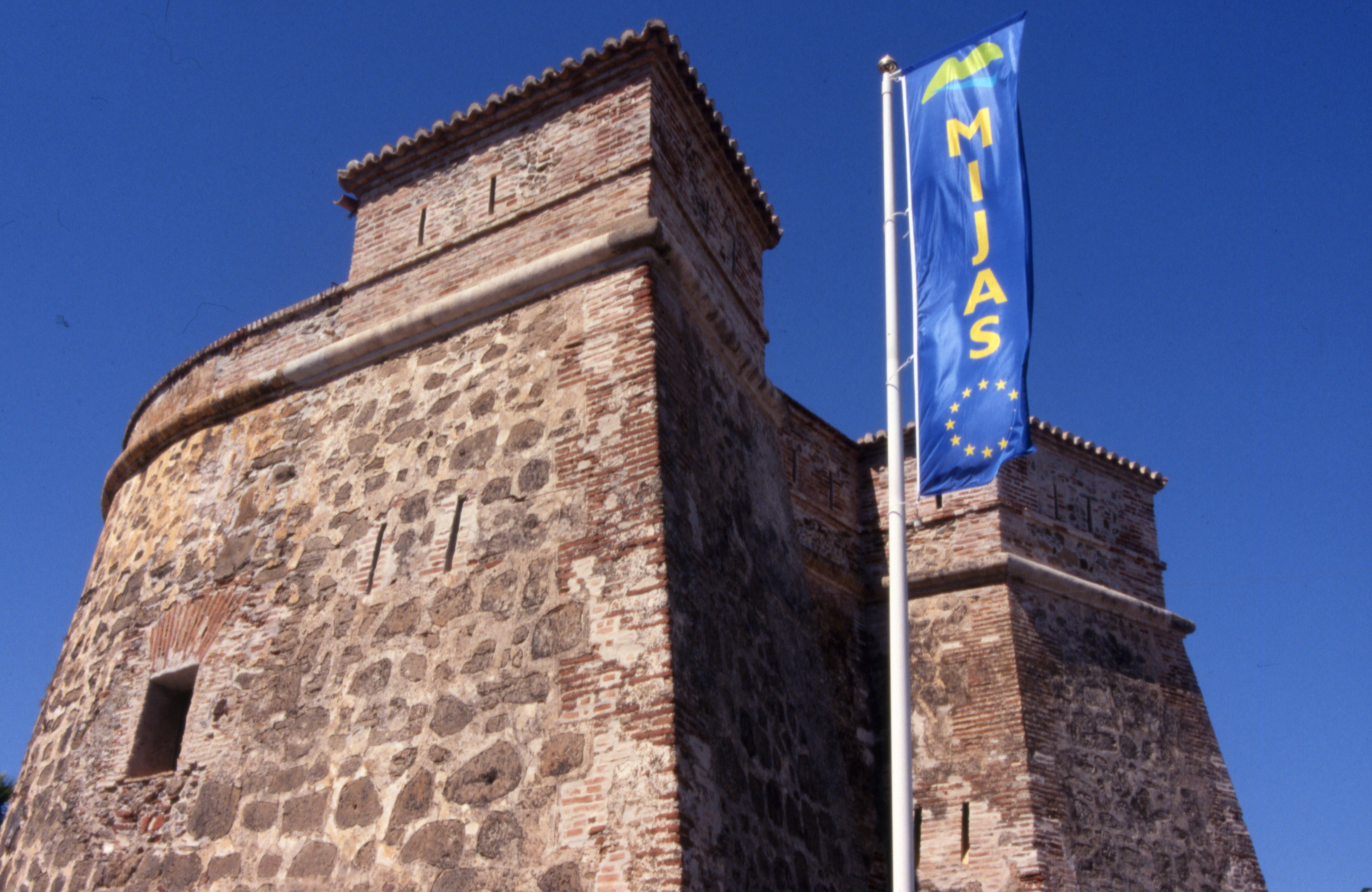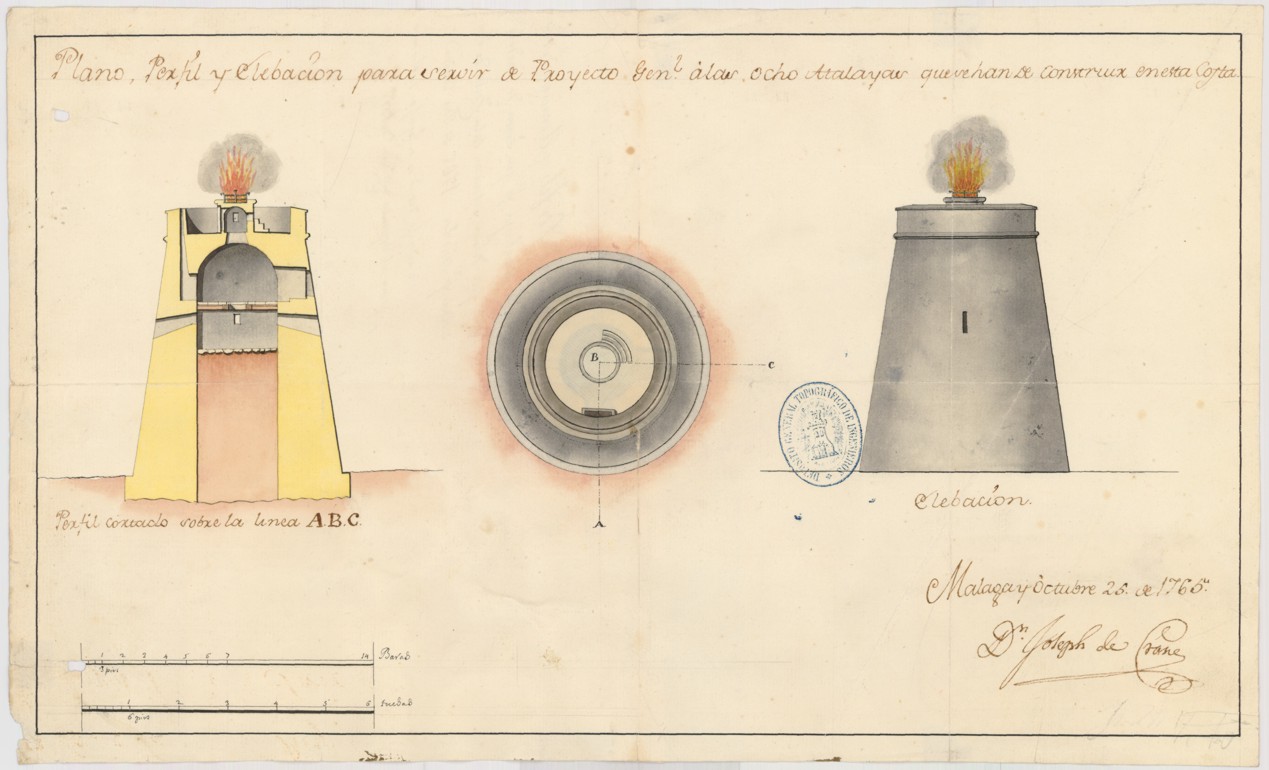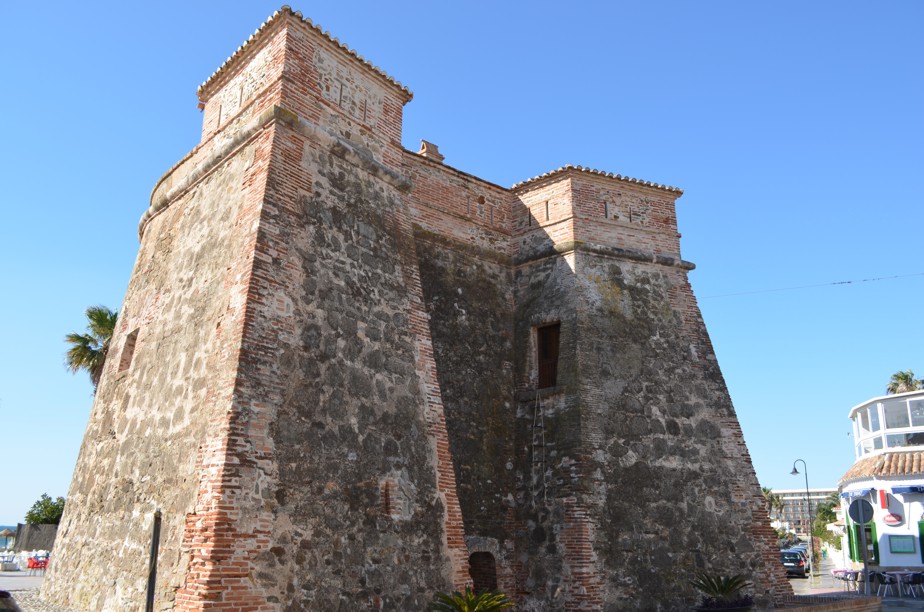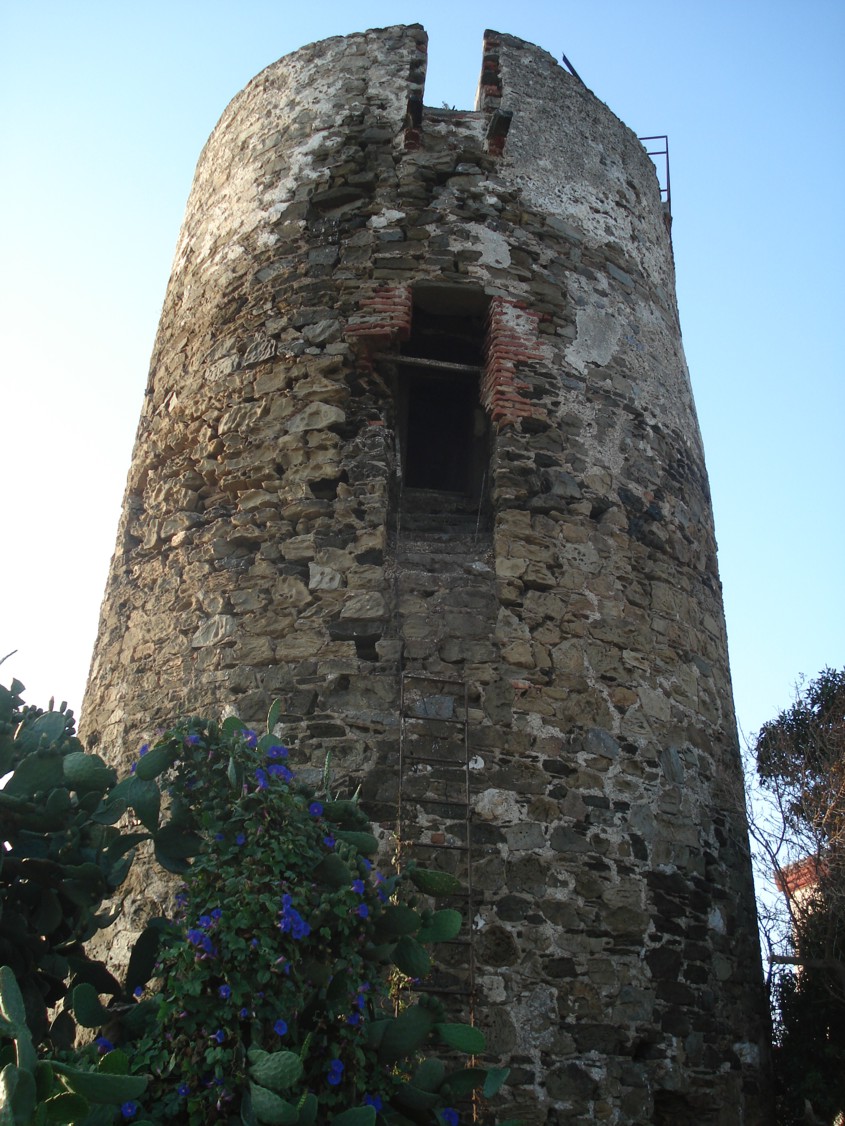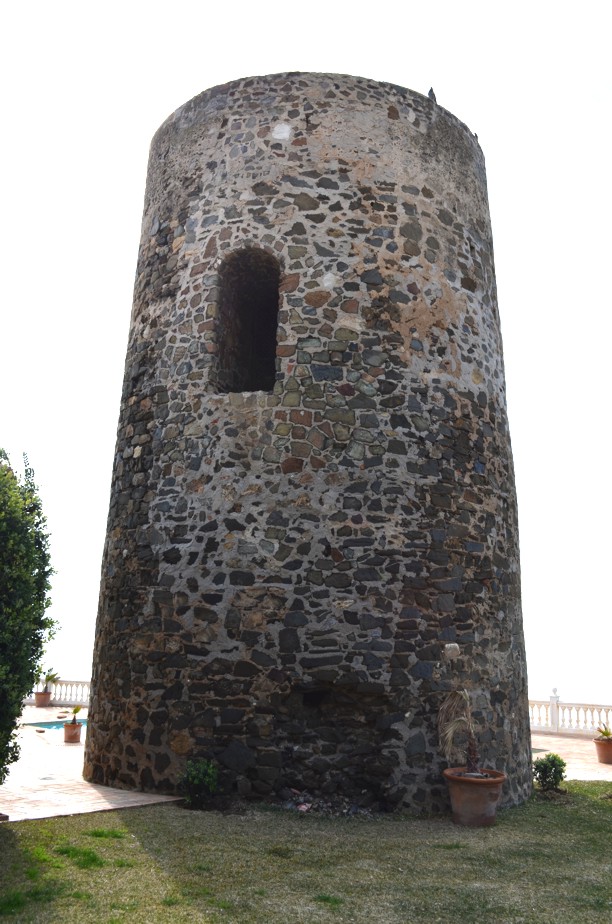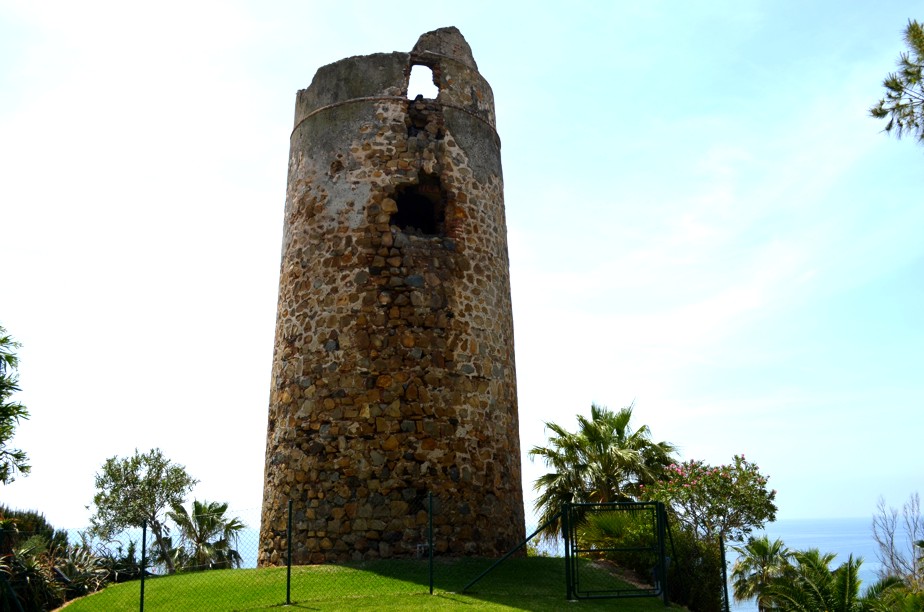Mijas - Watchtowers
CLICK ON THE IMAGE TO VIEW THE VIDEO
Even though this coastal defense system dates back to the Muslim period, since the arrival of the Arabs to the Peninsula, this system was motivated by political upheavals and was implanted in the mid- thirteenth century on the coasts of the Kingdom of Granada; they were given special attention, so much, that the monarchs of Granada built a series of watchtowers that subsequently, with the other towers were included in the Christian coastal defense system in the sixteenth century.
In principle, their defensive function was to give warning of the presence of enemy boats using fire at the top of the tower; the smoke could be seen by the surrounding towers and allow coastal guards know where to go to stop the attack of the “berberiscos”. They were later armed and became an active artillery defensive element.
After the conquest of Mijas in 1487 by the Christian troops of the Catholic Monarchs and the sale of its inhabitants as slaves. A policy was made to repopulate these areas that had been depopulated.
In 1492, the properties of the former inhabitants were granted to the new Christian settlers, who had moved to Mijas after the conquest, yet reassuring the presence of several Hispanic Muslim neighbors. However, within a few years, many of these settlers abandoned the land that was granted to them, due to various factors; such as the attacks to the coast of Malaga by pirates who came from ports located in the north of Africa, etc ., Causing the coastal zone to remain uninhabited, being unable to repopulate the area of the castle of Fuengirola , which in those days belonged to Mijas , until 1841, when the coastal strip was segregated to form the present municipality of Fuengirola.
Due to this uncertainty, watchtowers were erected along the Mediterranean to control and prevent the attacks by North African pirates. From the sixteenth to the eighteenth century, the Calahonda Tower, The New Tower of La Cala del Moral, The Old La Cala del Moral Tower( current home of the Interpretation Centre of Watchtowers, of the Historical - Ethnological Museum of Mijas ) The Tower of Calaburras and Blanca Tower (the latter disappeared and was situated in the municipality of Fuengirola), were built and all currently declared of Cultural Interest in the Monument category.
The same happened on the rest of the coast of the province of Málaga, numerous towers were built to complement those of medieval origin to create a new system of defense.
Sources:
Municipal Historic Archive of Mijas.
Gil Albarracín, Antonio; "Documents on the defense of the coast of the Kingdom of Granada” (1497–1857)” (2004)
Plan of the functioning of a Watchtower
Old Tower Cala del Moral (Torreón de La Cala) WATCHTOWERS MUSEUM
TIMETABLE:
July & August: Everyday from 6PM to 10PM
Rest of the year: Everyday from 10AM to 2PM
Address: C/ Torreón, s/n. 29649 La Cala (Mijas Costa)
Phone: 951 700 576 / 662 181 256
E-mail: This email address is being protected from spambots. You need JavaScript enabled to view it. / This email address is being protected from spambots. You need JavaScript enabled to view it.
Ticket: 2€ (Donation for AFESOL) - FREE ENTRANCE ON MONDAYS
Old Tower Cala del Moral (Torreón de La Cala)
The Tower is "hoof shaped" (horseshoe), it is formed by half a prolonged circle with two lunette salient. Its perimeter is 35 meters approximately and it is more than 10 meters high.
Inside the tower are two floors, the lower or basement would be the "Santa Barbara" (at ground level outside). The top floor or main chamber is illuminated by two windows and has a brick vaulted cellar in line with northern headwall, and is equipped with all the necessary services (pantry, fireplace, etc.) Finally, a roof terrace with a parapet and a chimney hole for smoke. On the two lunette salient there are roof terraces, where there are two turrets of 2.40 x 2.30 and 2.40 m in height. Both turrets have arrow slits on the front which are covered with Arabic tiles. The tower has been built of brick masonry with various elements such as corner posts, jambs and lintels, embrasures, parapet moldings, interior walls and vaults. The original access to the tower was 6 feet high up.
As indicated in a report of 1773, The “Reducto” Tower of La Cala del Moral was built in that year. A year later, another report mentions that the tower was equipped with two cannons of 16 or 24 pounds in weight and that they were in good condition.
In 1821, it was noted that Torre Cala del Moral Artillery needed new ground for two cannons of 8 pounds in weight and needed considerable works. Later, in a document of 1830, the tower is described as a circular tower of 11 *varas in diameter and enclosed with a fortification of 13 and a half *varas high and a tower which was garrisoned by a corporal, three tower keepers and six soldiers.
In 1849, a report is made saying the tower is in a very bad condition and its is advised not to maintain it, nevertheless in 1857 it is mentioned that the tower had been re-paired and is in good condition. In later re-ports: 1860, 1873, 1906 and 1945, it is indicated that the tower is unarmed. Some authors point out, incorrectly, that the tower was finished in the early sixteenth century.
In the past century, the tower has been used as a home and a front door was opened at street level, as well as a window, into what was originally the ammunition depot. Later, it was restored by the Town Hall of Mijas, who turned the building into a museum. Currently it is the home of the Interpretation Centre of Watchtowers.
Click here to see the location
Calaburras Tower
The Tower is known as “Calaburra” or simply by “Burras”.
In a document of 1571, it mentions La Cala and the residence of las Burras, which indicates the existence of a small military settlement; but it wasn’t until 1574 when Francisco de Córdoba, General Captain of the Kingdom of Granada, handed over 75,000 maravedís to pay for the construction of the tower. The tower was finished a year later. The initial budget rose up to 200,000 maravedís (550 ducados).
The next reference to the tower was in 1634 when Pedro de Texeira includes the tower with that of the Tower of Calahonda and Tower La Nueva in his works “Description of Spain and its coasts and its Kingdoms”.
In 1762 a report is made that indicates that the Tower of Calaburras is in a “medium” state and is equipped with two cannons of 4 pounds each in weight. That the building had two tower keepers who had 6 “fanegas” of dry land for their use. Nevertheless, two years later, in the rules and regulations of 1764, the tower is described as having a corporal and three tower keepers.
The General Plan of Building Works made in 1767, points out that the Tower of Calaburras needed to be reinforced to support two cannons of 4 pounds in weight and have repair works done. These works must have been carried out, because in 1774 the tower was armed with these cannons.
There were no novelties until the middle of the 19th century, when in 1857 it was indicated that the Tower of Calaburras, with a sort of cylinder shape of 25 ½ *varas(Measure of length that was used in different regions of Spain with different values, ranging between 768 and 912 mm) in diameter, was in good condition and had been included in the telegraph project that was set up that year. In 1863 the lighthouse nearby with the same name began to work. This lighthouse was demolished later and was rebuilt in 1928, with a height of 23metres.
Temboury, points out wrongly, that it was built in 1515, and describes the tower as boat tail with a base of 7,90 meters in diameter and a housetop of 5,75 metres and 13,40 meters in height. The original entrance was 8,50 meters high, even though later the entrance was situated 6,70 meters.
Click here to see the location
Calahonda Tower
Even though the tower is situated in Mijas, it is very near to the municipality of Marbella. The tower is popularly known as “Lancón Tower” and was finished in 1575 with a budget of 560 ducados. Some authors have confused it with the medieval Tower of Calahorra.
The tower is boat tail in shape with a base of 7,35 meters in diameter, and a height that goes from 5,85 meters to 10,20 meters. The entrance to the tower is at 6,10 meters of height and has a protection wall with crenels.
A report made in 1726 points out that the Tower should be equipped with a small cannon and two pedreros which is a cannon that shoots stone balls and a corporal and six soldiers. Later in the rules and regulations of 1764 it states “The Tower of Calahonda, which is the tower that is situated furthest to the East of the municipality, is equipped with a corporal and three tower keepers.”
In 1765 there was a project to install two cannons of 4 pounds in weight, which stated “the vaults have to be reinforced, to make a common use space and other repair works must be carried out” The General Building Plan wrote two years later “The Tower of Calahonda needs to reinforce its vault, and reduce the parapet to the height of the sponson to enable two cannons of 4 pounds in weight to be installed, as well as other repair works”
In August of 1774 a report indicated that the Tower of Calahonda had been equipped with two cannons of 4 pounds in weight and was in service.
In 1830 another document described the watch tower of Calahonda as 40 *varas away from the sea, with a circular shape, managed by a corporal, three tower keepers and four soldiers.”
In 1857 it was pointed out that the Tower of Calahonda was 40 *varas away from the sea, had a cylinder shape of 26 *varas of circumference and was in a medium state in need of repairs”. A project of the Telegraph Stations established in 1857, included the Tower as one of its telegraph points.
Temboury made a reference to the this tower, situating it between the Tower of Ladrones and that of La Cala del Moral, stating wrongly that they were finished at the beginning of the 16th century.
Click here to see the location
Penta Peseta Tower (torre nueva)
It has also been called The Tower of Cala del Moral , Tower Peseta and Torre Penta- Pesetas. According to some authors, the Tower began construction in 1513, but other authors state it was completed around 1568 .
In a document dating back to 1759, the New Tower appears stating “it is situated West of the Calaburras Tower and East of Calahonda.” it also states that “the tower is in good condition , but needs some plastering and works done to it.”
A few years later, in 1762, the tower is again described as “in a average condition with capacity for a 4 pound cannon.” Years later some documents indicate that there was actually two towers with 6 acres of land for its use.
The New Tower of Cala del Moral appears in a document dated the 1764, here its described as “equipped with a wing with three towers”, whilst in the general plans dated the 1767, It highlights that to mount the 4 pound cannon, the tower has to be reinforced and some repairs must be made. In a document dated 1773, it indicates that the Tower is in good condition and we know that a year later the works were carried out to reinforce the tower and two 4 pound cannons were installed and in working use. Later in the reports dated 1781, 1783, 1787 and 1821, it was indicated that the tower was in need of repair.
In 1830 the tower was equipped with a corporal, three tower keepers and four soldiers. In the mid-nineteenth century it is described as “New Watchtower, 120 yards from the sea, crowning a hill, a cylinder of 21 *varas circumference, with conical shape, with a upper “garita” (small building for soldiers to keep guard), measuring 5.65 meters in diameter at its base and 10.65 meters of height. The gateway stands 6.50 meters tall, facing the sea.
Click here to see the location

